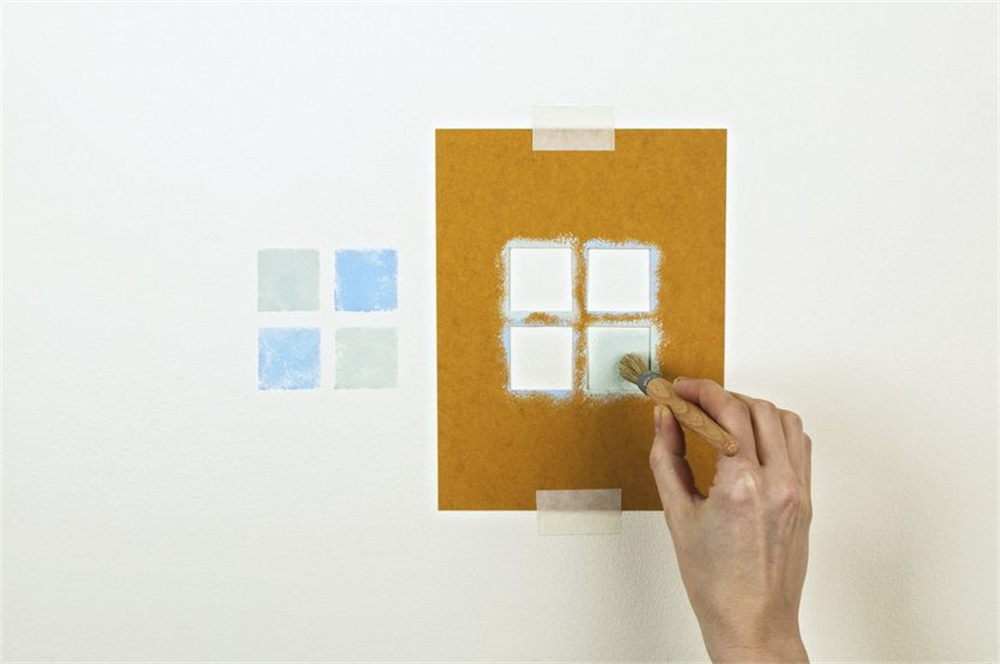Getting sloppy with stencils
Whether you're going for a bold accent or a subtle, textured wall, using stencils in a painting project can add a sense of elegance. But they can also add extra work - even for the pros.
To avoid mistakes on stenciling projects, don't let your brush get too much paint on it.
If bleed-through occurs, use a small brush to fix mistakes. Or, if the paint is new, simply wipe it off with a damp sponge.
If that doesn't work, let it dry, reapply, and start over.

Staring at the streaks
Painting stripes without first measuring and marking the wall can be a disaster. This can result in uneven, wavy stripes that look unprofessional and sloppy.
To avoid this aesthetic nightmare, plan ahead.
Prime your walls, measure, draw lines (with a ruler), and line them with tape. Then paint the base color, let it dry, and add stripes. See this complete guide to painting stripes.

Painting on a dark wall
No matter who you are, trying to rewrite a burgundy wall with sky blue paint can be difficult.
At best, it requires two to three extra coats to cover the old color and prevent it from showing through,. But some combinations of color and paint will make it almost impossible to cover completely, and any gaps or cracks in the new paint will be very visible when the old color shows through.
There are certainly ways to get out of the light and dark dilemma, but be prepared to invest more time and effort in this project.
If you want to lighten a room, always sand off the old color first and then apply a thick coat of primer over it.

Using the wrong kind of paint
Paint is paint, right? That's not true.
Just like you wouldn't use lipstick or eyeshadow as blush (except in a pinch!) ), and you don't want to use the same paint on your cabinets that you use on your bathroom walls.
Different rooms require different types of paint or paint finishes.
Bathrooms need a glossy paint that can withstand moisture.
Latex or oil-based paints are best for cabinets and trim because they produce a smooth finish.
In bedrooms, you can use almost any paint type or finish: flat, matte, eggshell or satin.
Failure to prepare
As with many jobs in life, the worst mistakes happen when you are not prepared. When painting interior walls, this can manifest itself in many forms.
You must consider the entire process from start to finish. Using glossy paint on textured walls or high gloss paint on floors can cause the paint to peel or flake.
Not properly preparing the surface before painting - which may include skipping steps such as sanding, priming or cleaning the surface - can lead to poor adhesion and uneven coverage.
Not allowing enough time for the paint to dry between coats can lead to drips, runs and other hard-to-fix defects.
You should also be prepared to invest in premium paints and tools that can make a big difference in the final result.
You will be living with your paint job for many years and it is tempting to take shortcuts; however, before doing so, consider the long-term implications.












































